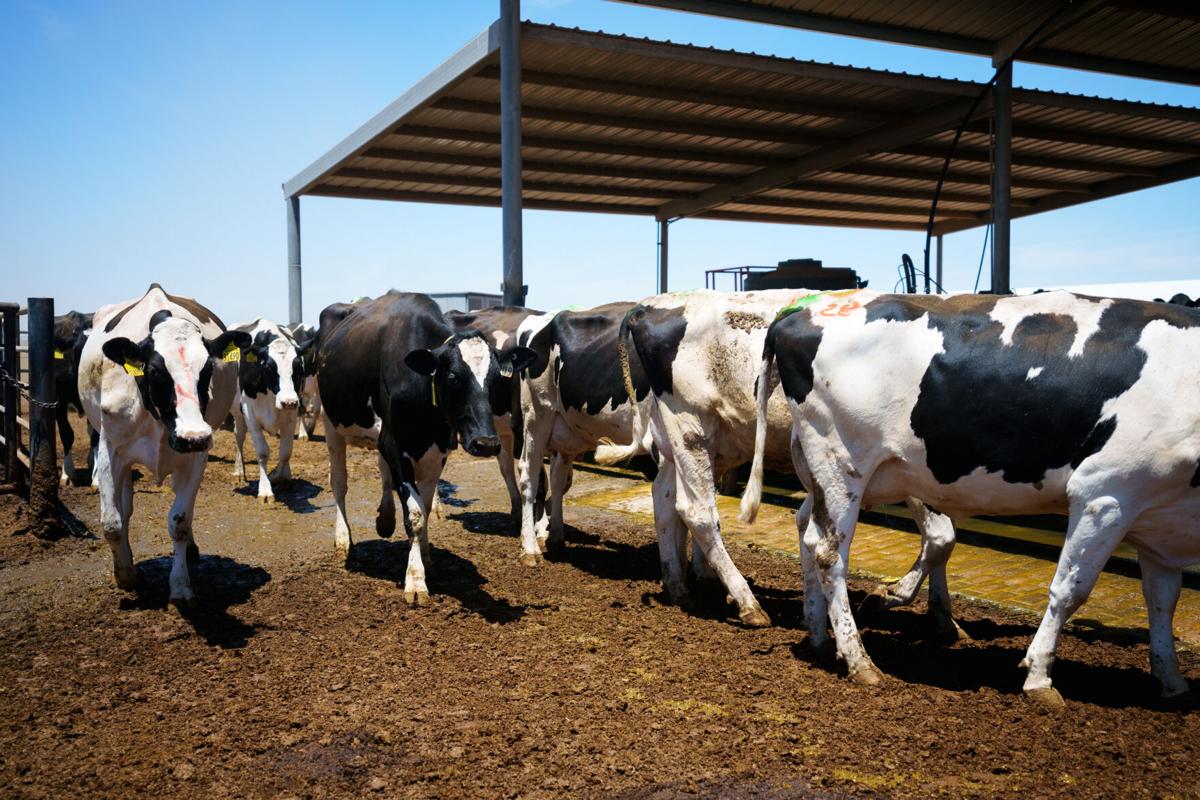Arizona is considering ushering in regulation of groundwater pumping in the Gila Bend area that officials say is suffering some of the worst water level declines in the state.
The Arizona Department of Water Resources will hold a public meeting Tuesday, Jan. 30 in Phoenix as a first step toward deciding whether to create a state-run active management area to control groundwater pumping in the Gila Bend Basin. If one were to be declared, it would be the seventh of its kind in the state.
Before that could happen, the department would have to formally propose creating it and to hold public hearings.
Announcement of this meeting comes as tensions and disputes over groundwater regulation have escalated statewide in the past year, along with concerns about declines in groundwater levels in rural areas.
Environmentalists, farmers, county supervisors, legislators and ADWR have been divided over whether regulation is needed to prevent continued groundwater declines and if so, how much is warranted.
The Gila Bend Basin, covering nearly 1,300 square miles, lies about 50 miles southwest of Phoenix and a little less than halfway between Phoenix and Ajo west of Tucson. Its economy is dominated by farming. As in other rural areas of Arizona, the groundwater pumping carried on by farmers is unregulated.
Because of its water level declines since 2000, the Gila Bend Basin is considered one of the department’s “top priority” groundwater basins in the state, said Ryan Mitchell, ADWR’s chief hydrologist.
From 2000 to 2020, water levels fell on average nearly 90 feet in that basin, ADWR records show. In that period, more than one-fourth of 18 “index” wells in the basin that the agency regularly monitors dropped 100 to 200 feet, Mitchell said.
None of those 18 wells have shown increases since 2000, he said.
And at the basin’s northern end, well level declines are “getting close to” 300 feet over the past 28 years, Mitchell said.
“That’s a non-trivial amount of decline,” Mitchell said.
An increase in the rate of land subsidence, or the collapsing of an aquifer due to soil compaction triggered by over-pumping, is one sign of the worsening water table conditions in the basin, he said.
Satellite data showed the subsidence rate in the basin was “pretty low” from 2000 through 2013. But in the last five to 10 years, the subsidence rate “has more than tripled,” Mitchell said.
“To me as a scientist, this trend is worth investigating,” he said.
Earth fissures — a frequent byproduct of continued subsidence — form when subsidence occurs over a pretty long period of time, and forms a large network of hairline cracks in the ground, Mitchell said. Then, it takes awhile for rain or snow events to expand hairline cracks to form fissures, he said.
“We haven’t seen the ground open up yet from earth fissures, but it’s pretty safe to assume that they will happen” in the Gila Bend Basin, Mitchell said.
Active management areas, commonly called AMAs, are groundwater basins that are subject to certain statutory and administrative regulations regarding the withdrawal and use of groundwater. Currently, six such areas exist in Arizona, managing groundwater use in Tucson, Prescott, Phoenix, Pinal, Santa Cruz County and Douglas.
In an AMA, all wells capable of pumping more than 35 gallons per minute are required to measure their groundwater withdrawals with a device and method approved by ADWR. They must report the groundwater withdrawals to the agency.
Creation of AMAs has been a very controversial issue in rural Arizona over the years. Since the five AMAs in urban areas were created in 1980, only the Douglas area’s residents have voted to create one, in 2022. Residents in the Willcox Basin voted overwhelmingly the same year to kill a measure that would have created an AMA there.
Even some supporters of regulation of rural groundwater pumping have said they don’t see AMAs as their first choice for some areas.
Gov. Katie Hobbs, a Water Policy Council that she created and ADWR have in the past few months advocated an alternative measure that would allow residents of an individual basin to establish rural groundwater management areas. Those would also have groundwater regulations, but they are seen by supporters as more tailored to a specific area than active management areas, which are often blasted as “one size fits all” solutions.
But many farmers and county officials have fiercely opposed the pending proposal — which hasn’t yet been formally introduced as legislation — although some county supervisors and farmers have endorsed it.
Similar proposals have failed to even get a hearing in past years because Rep. Gail Griffin, chair of the Arizona House Energy, Natural Resources and Water committee, has refused to call one.
She and other opponents say such regulations would infringe on private property rights. They’ve repeatedly opposed proposals to have metering of well usage in rural areas, out of concern that metering would lead to future controls.
Because of that opposition, Hobbs and ADWR officials have said they wouldn’t rule out creating AMAs in parts of rural Arizona if they believe they’re justified by groundwater conditions.
Asked if others might be considered in the near future, ADWR spokesman Doug MacEachern replied, “The director of the department has the ability to evaluate groundwater basins throughout the state and initiate AMA proceedings if statutory criteria are met. We’ll continue to examine groundwater basins across the state that have been facing declines.
“This is within lines of our statutory obligation. That’s our job,” he said.
Get your morning recap of today's local news and read the full stories here: tucne.ws/morning





